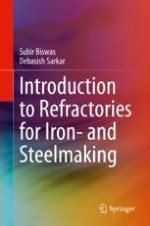2020 | OriginalPaper | Chapter
10. Refractory for Casting
Authors : Subir Biswas, Debasish Sarkar
Published in: Introduction to Refractories for Iron- and Steelmaking
Publisher: Springer International Publishing
Activate our intelligent search to find suitable subject content or patents.
Select sections of text to find matching patents with Artificial Intelligence. powered by
Select sections of text to find additional relevant content using AI-assisted search. powered by
